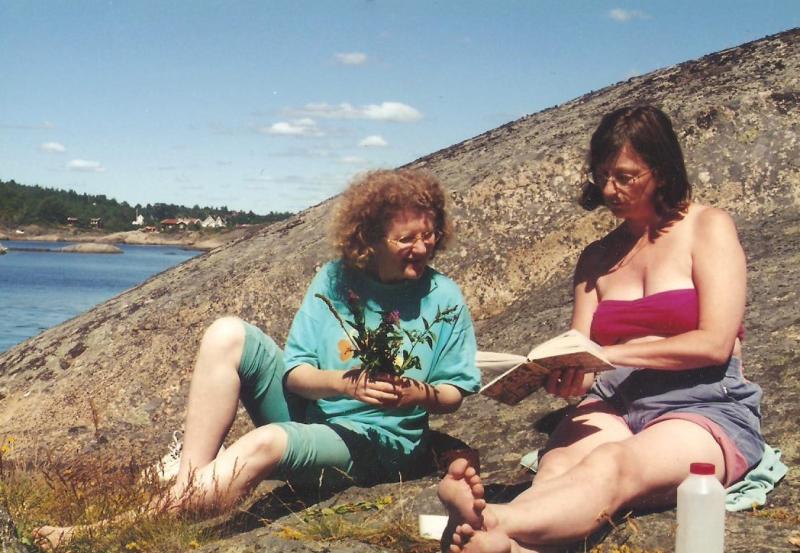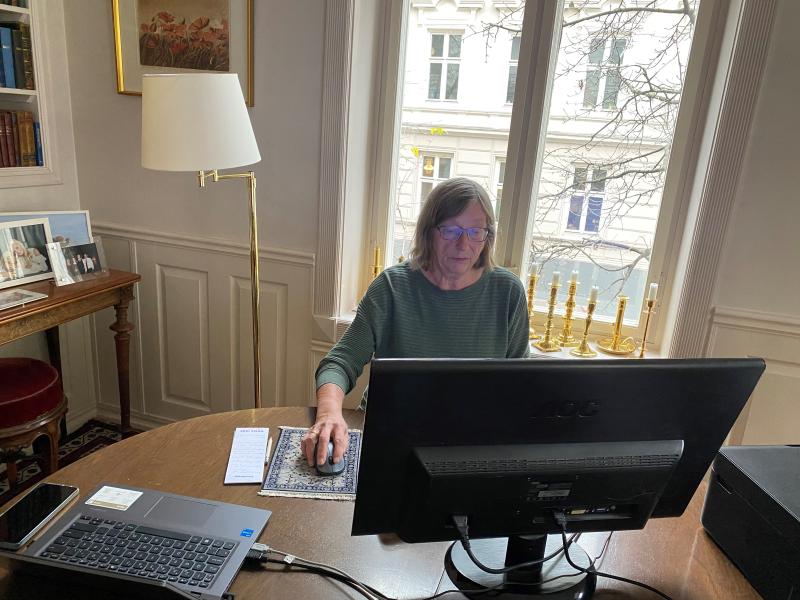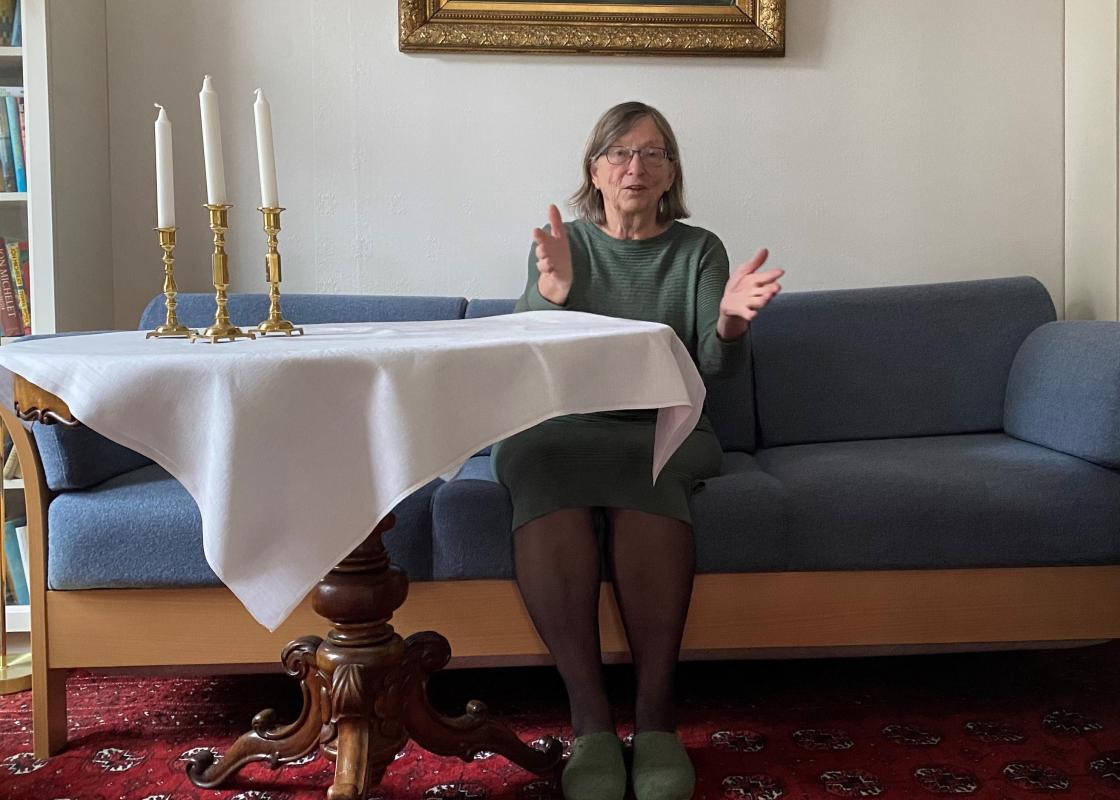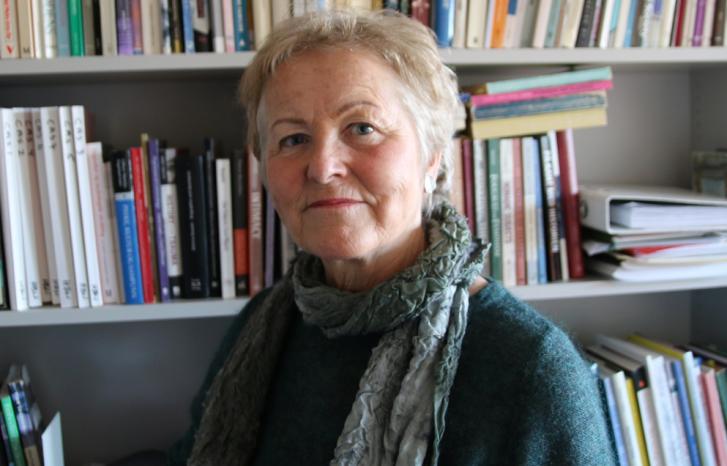If there’s one thing economist Charlotte Koren regrets, it’s that she didn’t complete her PhD. She’d written her dissertation, but it was left lying in a drawer.
“When I retired in 2012, I thought: Should I really go to my grave without having published this manuscript?”
Kilden’s news magazine meets the now retired economist in an old, high-ceiling apartment in St. Hanshaugen in Oslo. Koren knew that the book she eventually published in 2012, Kvinners rolle i norsk økonomi (Women’s Role in the Norwegian Economy), would stir a reaction. Many found the notion that housewives actually perform work to be problematic.
The book, based on the PhD dissertation she never submitted, became Koren’s swansong. She started her rich career as an economist at Statistics Norway and the Ministry of Finance, and continued as a social security and pensions researcher at NOVA – Norwegian Social Research institute.
“I’ve always strived to make women and children visible in the statistics,” says Koren.
Her research now appears to have taken on new relevance: The “Tradwife” phenomenon on TikTok, where young women romanticise life as an influencer wife, has made Koren an obvious point of reference.
“Care is hard work,” she said in an interview with the newspaper Dagens Næringsliv last autumn – a simple observation that nevertheless has radical implications when taken to its extreme.
Stirred a response
When her book was published, Koren received many favourable reviews, but also criticism.
“An example is when an acquaintance once came over to me and said: ‘I see your book’s come out. I haven’t read it, but are you really in favour of a housewife’s wage?’ As if that’s the worst thing in the world! That was just nonsense. My point was precisely the opposite.”
“How’s that?”
“I was trying to show that housewives – and, by the way, also their children and husbands – do productive work. They produce, they do something, they create value for themselves and their families, and surely they shouldn’t have a salary on top of that?,” says Koren and adds:
“But I don’t think we’ve realised that when all the women find paid work, it will have an impact on men’s everyday lives too. It’s a transition that affects us all.”
BGDP misleading
According to Koren, economic growth in Norway is not only due to women having paid employment.
“The explanation is somewhat technical, like a lot of things in economics,” says the researcher, using gestures to emphasise the important points:
“It’s also because we’ve moved from low-productivity work, such as simple tasks done by hand, to high-productivity work, which is work that creates more value because it uses more capital, knowledge and technology.”
“Everyone was certain that I would become a mathematician or a physicist or statistician.”
Much of the increase in gross domestic product (GDP), particularly from the 1970s, is due to work that was previously invisible being moved out of the home and included in official surveys and statistics.
“The way GDP is calculated therefore overestimates the increase in goods and services that we have at our disposal, because production in the home has decreased simultaneously.”
Economics for life
Although Koren shows a hint of a smile when she talks about “productivity growth” and “input factors”, she now has some regrets about devoting her career to economics. After Kilden news magazine’s reporter has taken a few photos of her, the economist asks: “Are you a dancer?” – and adds: “Because that’s what I should have become. A dancer.”
But no. Koren became an economist. And it could hardly have turned out any other way.
She was born in Trondheim in 1946, forming part of the “peace children” generation – the biggest baby boom in Norway’s history.
“We were a lot of children. There were so many of us that we had to go to school every other day because there weren’t enough classrooms.”
When her parents got divorced in the 1960s, Koren moved to Oslo with her mother and sisters. She grew up in what she describes as “a very female world”.
And when it came to choosing a career, all the men in the family were in the “hard sciences”. Her grandfather was a geologist and her father a metallurgist and chemist.
“Everyone was certain that I would become a mathematician or a physicist or statistician.”

150 men and three “girls”
Koren had a head for maths. It was the early 1960s, the time when the first computers arrived. Young Koren took a course in computer programming. As a student, she could use FORTRAN, an early computer programming language.
“It must have been 1968,” says Koren.
“I’d done some exams in maths, physics and statistics, but I thought it was awful.”
She therefore switched faculties and started studying economics. At lectures in the large auditorium, there were maybe 150 boys.
“And three girls.”
“The other two looked a bit like each other, I think ... or maybe not? I don’t know. But I felt incredibly lonely.”
The former FORTRAN programmer says that she wasn’t considered an obvious partner among the boys taking economics.
“They preferred to go to the nurse’s school or French studies to find the ‘proper ladies’. Not the three of us, whom they knew all too well.”
Gave name to computing program
Koren landed her first job at Statistics Norway while she was still a student.
“To my surprise, I was called in to see the research director. As far as I know, he hadn’t called anyone else in”
He said: “We see that you can programme.”
He hired Koren for a project. With her knowledge of maths and computer languages, the newly employed twenty-something-year-old developed the LOTTE model, named after Charlotte. LOTTE is still used by the government to predict how, for example, changes in tax rates will affect the national budget.
“There was even an anniversary a few years back: ‘LOTTE – 50 years!’”
From tax to national insurance
After graduating, Koren got a permanent position at Statistics Norway and came to an important realisation. It concerned female labour.
“Women were almost invisible in many of the statistics,” she says.
“Take income statistics, for example. They showed the distribution of income, but only for people whose income was greater than zero. Large parts of the population, mostly women, were therefore left out.”
“Women were almost invisible in many of the statistics.”
According to the economist, this gave a skewed picture of how Norwegian families actually lived, and she saw it as her duty to make women more visible in the statistics.
During her career, Koren shifted her focus from tax to benefits and national insurance. In the 1990s, she became a researcher at the Institute for Social Research (INAS), which later became part of NOVA – Norwegian Social Research institute. Here, she began to take an interest in the small pensions of housewives, widows and single mothers.
“Why?,” she asks rhetorically.
“Because no one else wrote about it.”
Not a clean-cut feminist economist
For many years, Koren was co-editor of the journal Feminist Economics. She shared her own articles, and in 2001 helped organise the first international feminist economics conference in Norway, at Holmenkollen Park Hotel in Oslo.
“At the same time, I was always a bit on the outskirts of feminist theories,” she explains.
In her book, Koren challenges established feminist jargon. It has been common to distinguish between production and reproduction. Production is about creating goods and services that have economic value, i.e. “products”, while reproduction is about the processes that keep the people and machines that create the products alive.
“But for me, its all connected,” says Koren before adding:
“Caring for and raising children, or cooking, is no different to farming.”

Good food has economic value
Koren employs the language used to describe factory production to understand the value of women’s work at home.
We all know, for instance, that the food we eat has a value. And this value is created in several stages. The goods have to be bought, transported home and put together to make an edible meal, which requires time and labour.
“They pounced on me! They thought that children should make their own packed lunches.
For Koren, the stove is a form of “capital”, an input factor in production. As is the kitchen it’s in. “You need a kitchen to produce food,” explains the economist.
People appreciate food that is healthy and tastes good. But the value of good meals, Koren writes, is not recognised in national budgets. Economists who measure GDP don’t care about whether the food you eat at home tastes good.
The same can be said about the quality of care: “It isn’t the same if it’s grandma or an unknown babysitter who comforts a child who has woken up from a nightmare.”
Reprimanded for packed lunch
Koren says that former colleagues have found it difficult to listen to her when she talks about the services she provided free of charge at home as a mother of young children.
“I remember once mentioning at lunch that I made packed lunches for my children. That was just about showing care and consideration. “I think meals are important, for both children and adults,” says Koren, who was left speechless by the reactions:
“They pounced on me! They thought that children should make their own packed lunches.
Koren fought many gruelling battles at NOVA.
She also gave lectures, and was often put in place for her “heretical” attacks on workfare policy.
“Once, after a lecture for a special interest organisation, a man came up to me and said: “Listening to you is like a shiver from the darkest Middle Ages!”
“I laughed out loud at that,” says Koren.
Published a book as a pensioner
“Around 2000, after working at NOVA for ten years, I woke up one day and thought: Now I’m going to write a dissertation!”
She started putting together material and worked on it for a few years, but she lacked the courage; it wasn’t working out. And then something else happened:
“I broke my arm.”
“For a younger person, it’s a minor issue, but for me it was a reminder of what’s important in my life,” says the researcher.
After that, she quit her job. Sitting alone at home, she decided to finish the book.
“When I retired, I no longer had any obligations to an employer. I was able to make my own choices and write what I wanted,” explains Koren.

An extensive work
Koren sits in front of her desktop computer looking for photos that Kilden’s news magazine can use in the article. As she shows black and white photographs of old family members, she reflects on her life – the economic roles she has taken on, first as a granddaughter and daughter, and later as a mother and grandmother.
“The times are changing. We’re better off now, and with that, what children are experiencing is also changing. Today, I take my grandchildren to the theatre and concerts, often with good seats, to show them culture.”
“But when I was a child, I only went along with my grandmother to her activities. It wasn’t about showing me anything, but about her necessary errands.”
Tradwife is a trend that will come to an end, Koren believes.
“But it’s interesting that women today, who are educated and have grown up in a time when professional work is considered the norm, emphasise values from family life,” the researcher points out.
Only time will tell what happens next, but one thing is certain: Koren’s work on documenting the lives and functions of women in the Norwegian economy is probably one of the most comprehensive we have.


